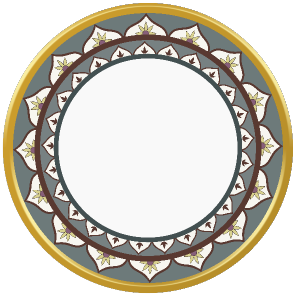

0


0

Culture
By Rashmi Rao
2 September, 2019
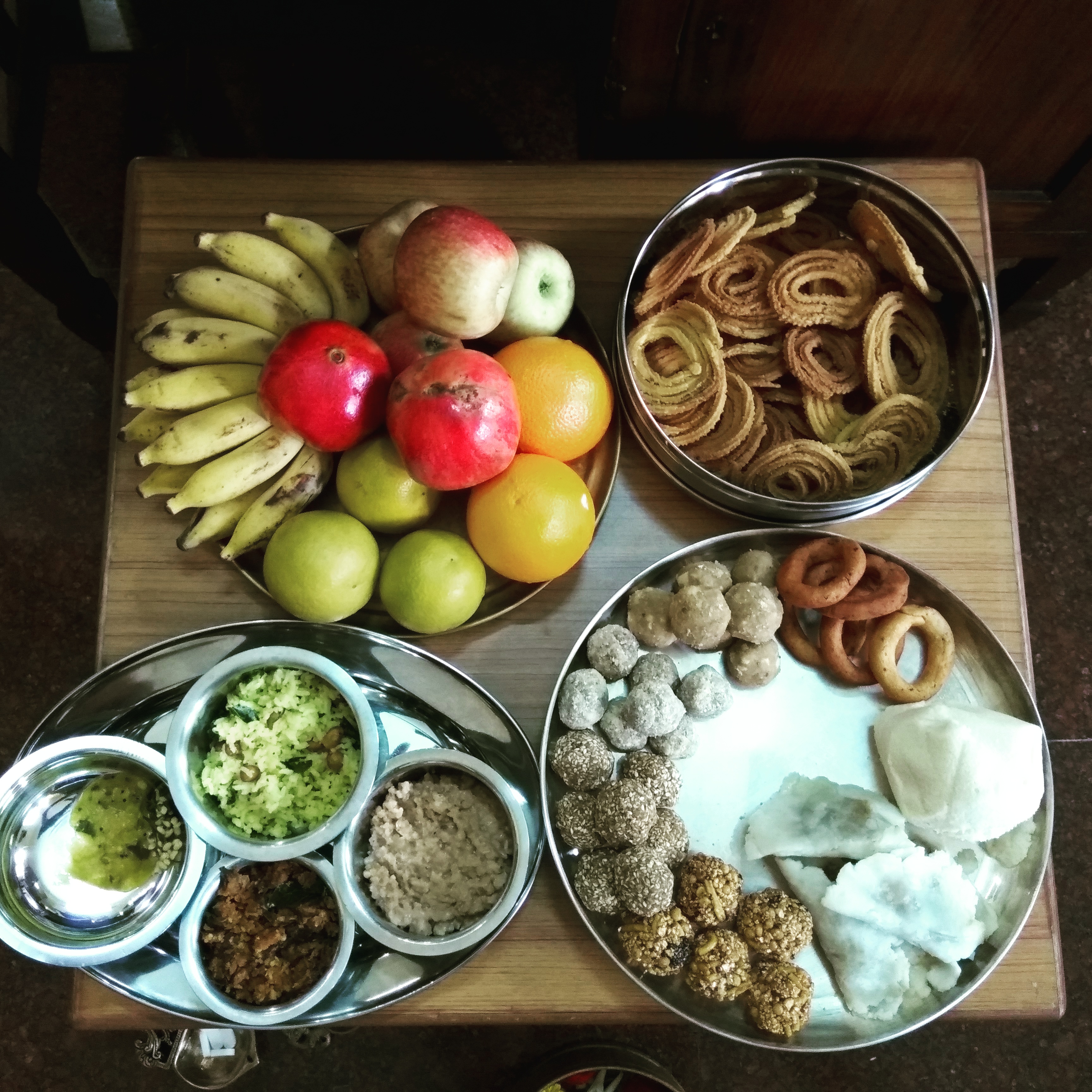
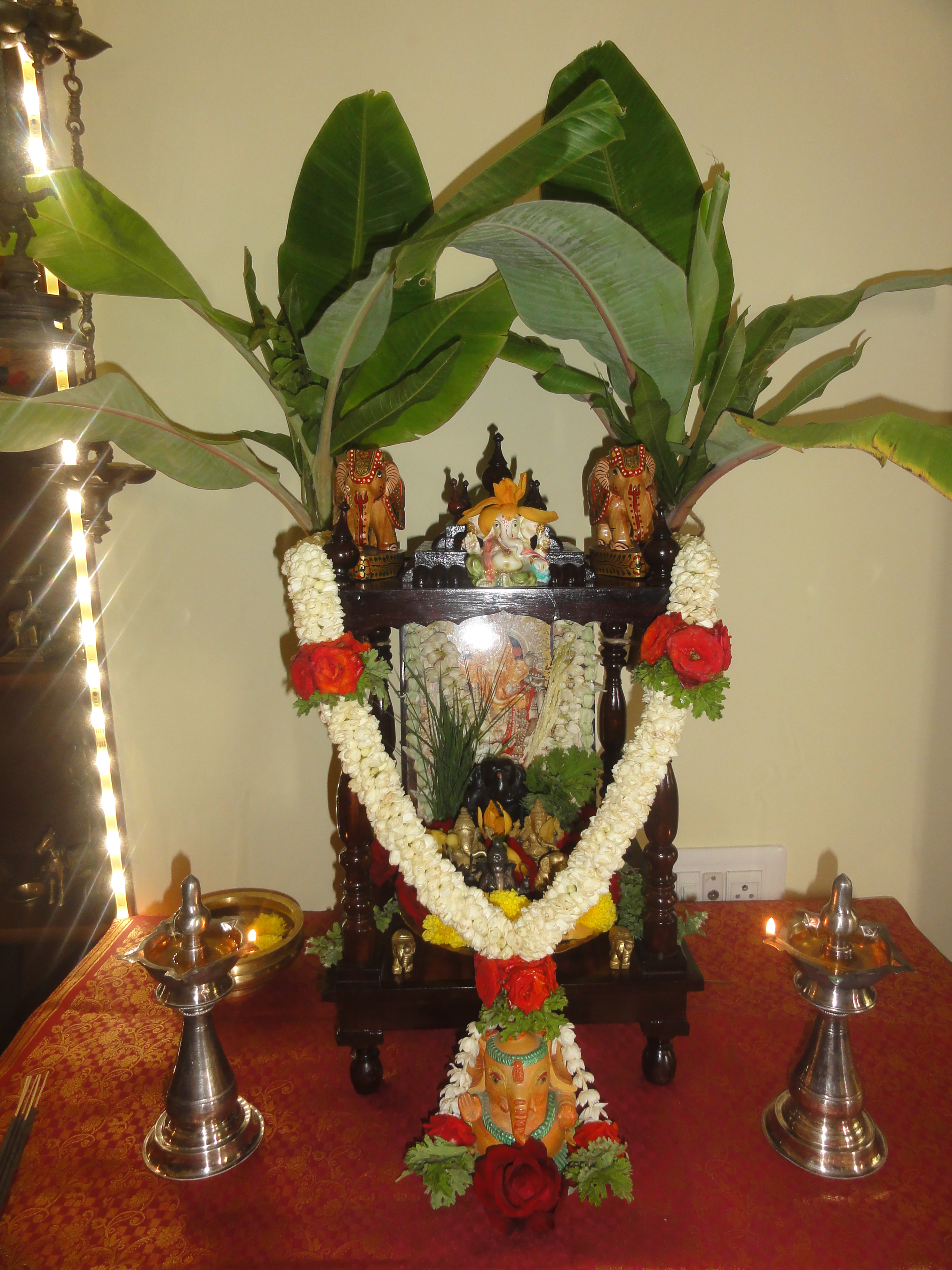 Ganesha festival decoration
Apart from worshipping the idol of Lord Ganesha that is present in each home, the festival is characterized by bringing home a clay idol of the Lord specially prepared during the festival. Hence, it is a common sight to see scores of colourful idols lining the streets weeks prior to the festival. Shopping for the idol is a big source of excitement and the same is normally bought home by the male members of the house. Idols that have the trunk pointing towards the right (called “Balamuri” Ganesha) are considered auspicious and hence is highly preferred. In states like Karnataka, Ganesha’s mother “Gowri” is worshipped first and on the day prior to the festival, hence idols of both Gowri and Ganesha are bought home together.
It is not only in homes but also city streets and localities bring in their own idols, some of which reach a height of 25 feet and more. Mumbai and Hyderabad are cities that are known for their awe inspiring Ganesha pandals and idol. The one installed in the Khairatabad area of Hyderabad is one of the tallest in the country with heights reaching 60 feet and higher! Most idols are immersed on the auspicious day of ‘Anant Chaturdasi” which falls ten days after the festival.
Elaborate worship
On the day of the festival, people get up early and after having a bath and adorning new clothes, commence the puja of the Lord. The idol that is bought home is installed in a designated place and either placed on a plate of rice beneath or a red cloth on which some rice is sprinkled. Colourful Rangoli or kolam is also done and the doors are decorated with mango leaves. The idol is then decorated richly with flowers of various kinds, some of which are considered highly auspicious to Lord Ganesha. These include the red hibiscus flower, the flower or inflorescence of the areca nut tree as well the blue Clitoria Ternatea flower.
In southern India, no puja of Lord Ganesha is complete without the offering of Durva grass and the calotropis procera flowers that are normally strung into a garland. Apart from flowers, 5 types of leaves including ‘bilwa patra’ is offered as well as intricate patterns made from cotton which are known as ‘Gajje vastra’. The latter are normally made and offered by the women folk of the family and again is a tradition popular in Karnataka. The chanting of 108 names of Lord Ganesha is another highlight of the puja along with other hymns, bhajans and an elaborate offering of food.
Special food offerings or naivedyam
Ganesha festival decoration
Apart from worshipping the idol of Lord Ganesha that is present in each home, the festival is characterized by bringing home a clay idol of the Lord specially prepared during the festival. Hence, it is a common sight to see scores of colourful idols lining the streets weeks prior to the festival. Shopping for the idol is a big source of excitement and the same is normally bought home by the male members of the house. Idols that have the trunk pointing towards the right (called “Balamuri” Ganesha) are considered auspicious and hence is highly preferred. In states like Karnataka, Ganesha’s mother “Gowri” is worshipped first and on the day prior to the festival, hence idols of both Gowri and Ganesha are bought home together.
It is not only in homes but also city streets and localities bring in their own idols, some of which reach a height of 25 feet and more. Mumbai and Hyderabad are cities that are known for their awe inspiring Ganesha pandals and idol. The one installed in the Khairatabad area of Hyderabad is one of the tallest in the country with heights reaching 60 feet and higher! Most idols are immersed on the auspicious day of ‘Anant Chaturdasi” which falls ten days after the festival.
Elaborate worship
On the day of the festival, people get up early and after having a bath and adorning new clothes, commence the puja of the Lord. The idol that is bought home is installed in a designated place and either placed on a plate of rice beneath or a red cloth on which some rice is sprinkled. Colourful Rangoli or kolam is also done and the doors are decorated with mango leaves. The idol is then decorated richly with flowers of various kinds, some of which are considered highly auspicious to Lord Ganesha. These include the red hibiscus flower, the flower or inflorescence of the areca nut tree as well the blue Clitoria Ternatea flower.
In southern India, no puja of Lord Ganesha is complete without the offering of Durva grass and the calotropis procera flowers that are normally strung into a garland. Apart from flowers, 5 types of leaves including ‘bilwa patra’ is offered as well as intricate patterns made from cotton which are known as ‘Gajje vastra’. The latter are normally made and offered by the women folk of the family and again is a tradition popular in Karnataka. The chanting of 108 names of Lord Ganesha is another highlight of the puja along with other hymns, bhajans and an elaborate offering of food.
Special food offerings or naivedyam
 Naivedyam
Ganesh Chaturthi is synonymous with a host of speciality foods that are offered to the Lord. God himself is a fan of foods like modak, laddoos etc, hence His favourite food is prepared on this day. Sweets like modak, kadabu and patole are popular in Karnataka and Maharashtra. These are sweets which are essentially a mixture of coconut and jaggery filled in packets made from rice flour. These are steamed either in banana or turmeric leaves. Motichoor ladoos, lemon rice, Shreekand, puran poli, banana sheera as well as payasam are some other foods prepared for the festival.
Naivedyam
Ganesh Chaturthi is synonymous with a host of speciality foods that are offered to the Lord. God himself is a fan of foods like modak, laddoos etc, hence His favourite food is prepared on this day. Sweets like modak, kadabu and patole are popular in Karnataka and Maharashtra. These are sweets which are essentially a mixture of coconut and jaggery filled in packets made from rice flour. These are steamed either in banana or turmeric leaves. Motichoor ladoos, lemon rice, Shreekand, puran poli, banana sheera as well as payasam are some other foods prepared for the festival.
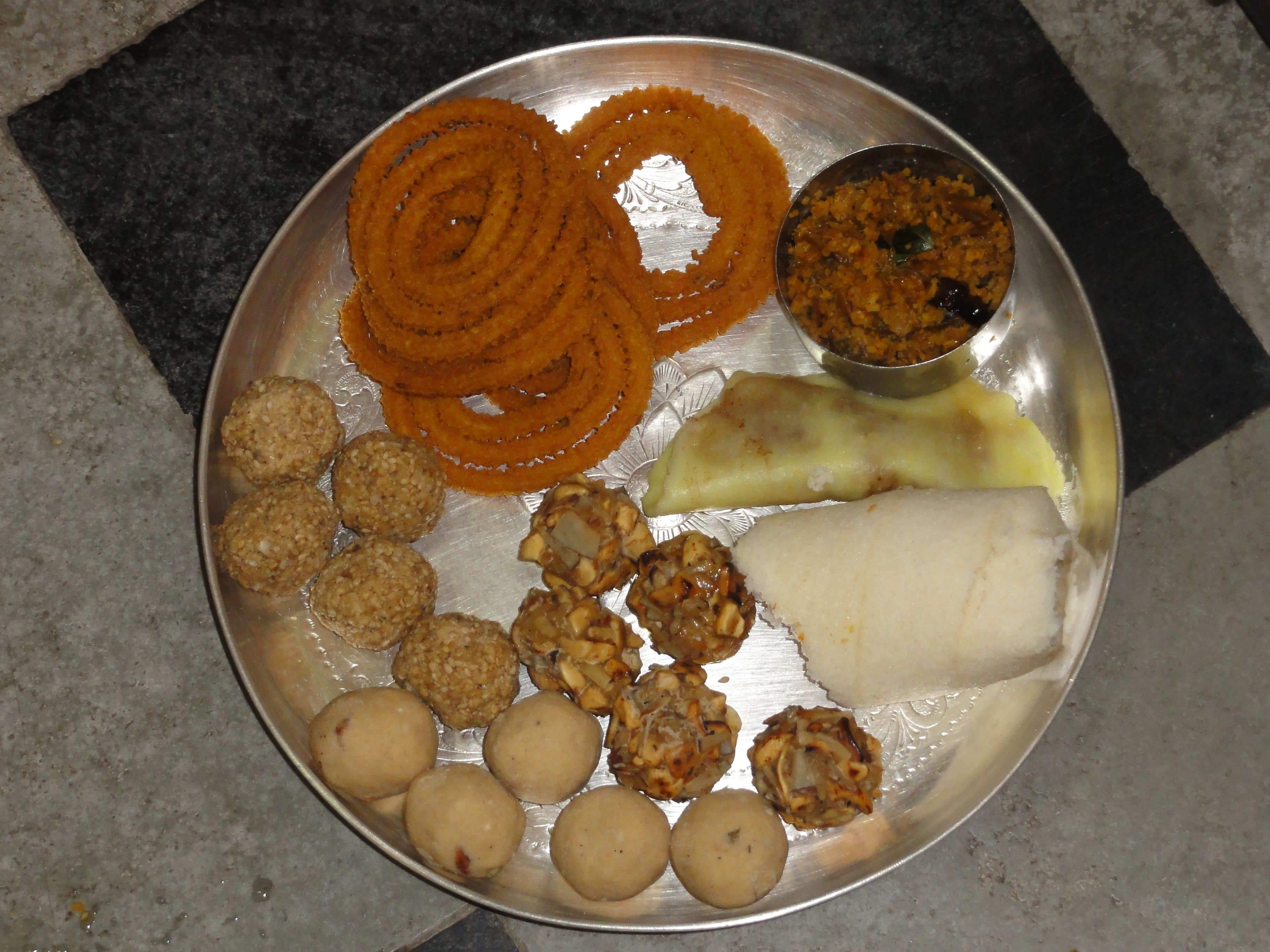 Festival plate
In coastal Karnataka, special savoury rice dumplings made from a fermented batter of rice (or idli rava) and urad dal are steamed in screw pine leaves and offered to the Lord. Known as Moode Kadabu or Kotte kadabu, these are considered very auspicious to the Lord and are also highly significant ‘sevas’ in prominent Ganesha temples like Annegudde and Guddattu Vinayaka temples in Udupi district. Panchakajjaya which is a dry mixture of various ingredients like gram dal, sugar, sesame seeds and cardamom amongst others is yet another key offering to Lord Ganesha here. The preparation of chakli or savoury rice flour spirals and laddus of sesame seeds and dry fruits are also special offerings in this region.
Festival plate
In coastal Karnataka, special savoury rice dumplings made from a fermented batter of rice (or idli rava) and urad dal are steamed in screw pine leaves and offered to the Lord. Known as Moode Kadabu or Kotte kadabu, these are considered very auspicious to the Lord and are also highly significant ‘sevas’ in prominent Ganesha temples like Annegudde and Guddattu Vinayaka temples in Udupi district. Panchakajjaya which is a dry mixture of various ingredients like gram dal, sugar, sesame seeds and cardamom amongst others is yet another key offering to Lord Ganesha here. The preparation of chakli or savoury rice flour spirals and laddus of sesame seeds and dry fruits are also special offerings in this region.
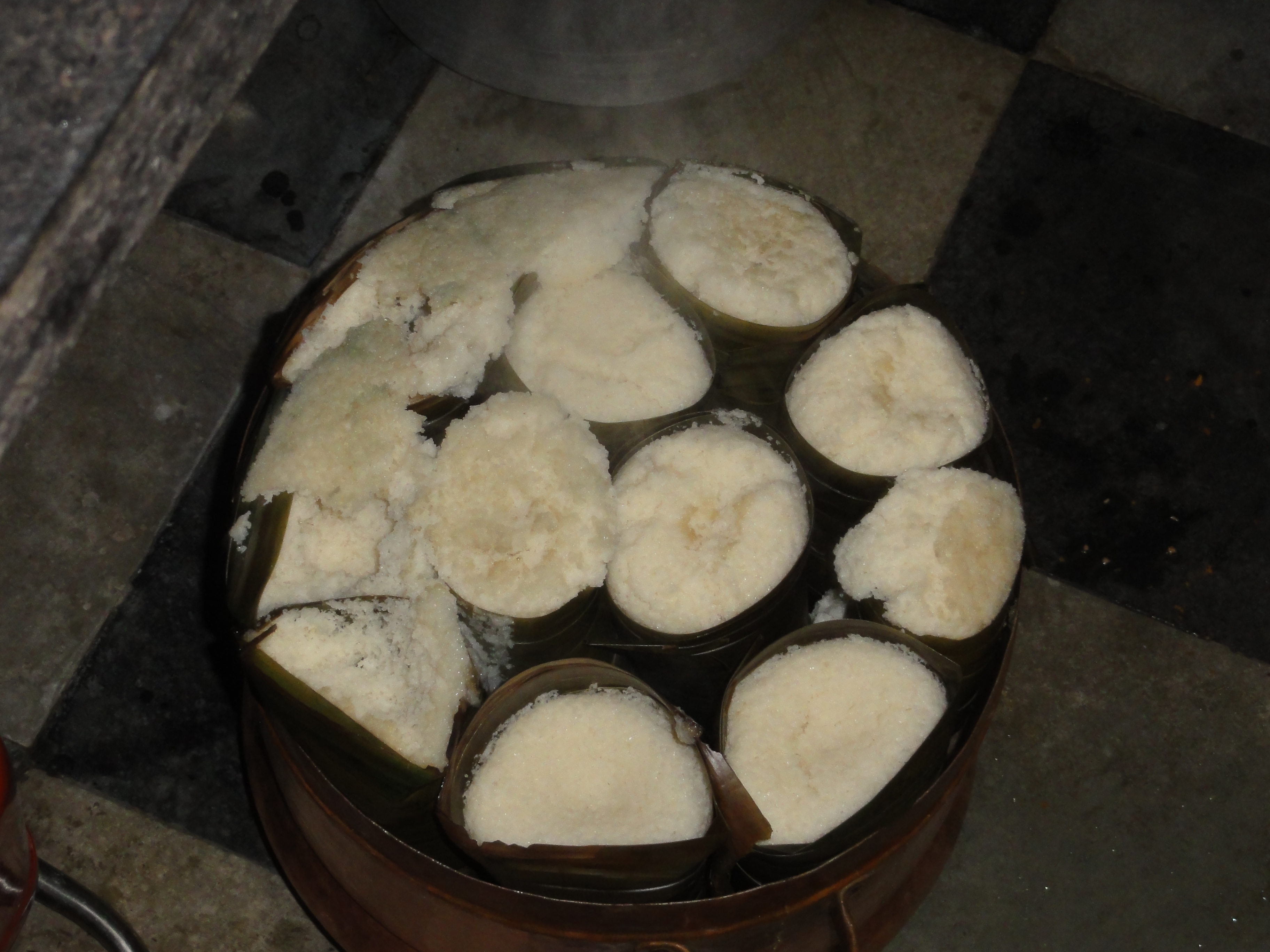 Kotte kadabu
Twenty-one is usually considered a lucky number and most foods like modak, chakli and laddus are offered in this number. The Ganesh Chaturthi puja concludes with a grand ‘aarthi’ after which family members take blessings of their elders and enjoy a grand meal. The idols in the houses are either submerged the same evening or on the 3rd or 5th day.
To know more such interesting articles, follow us on Facebook, Instagram, and Twitter. Download our magazine Spunky Indian for exclusive stories.
Kotte kadabu
Twenty-one is usually considered a lucky number and most foods like modak, chakli and laddus are offered in this number. The Ganesh Chaturthi puja concludes with a grand ‘aarthi’ after which family members take blessings of their elders and enjoy a grand meal. The idols in the houses are either submerged the same evening or on the 3rd or 5th day.
To know more such interesting articles, follow us on Facebook, Instagram, and Twitter. Download our magazine Spunky Indian for exclusive stories.